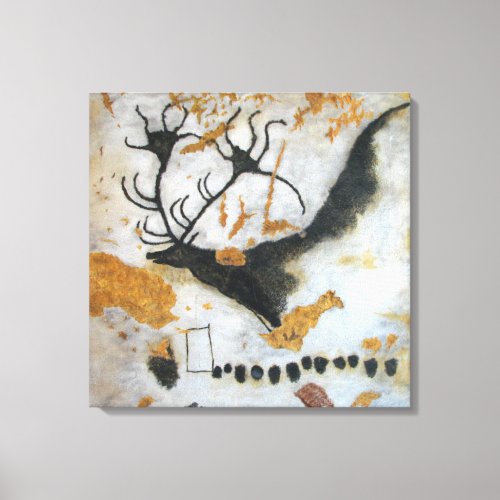Stone Age Lascaux Megaloceros Cave Painting Canvas



Unique canvas print replica Lascaux (Lascaux Caves) (English /læsˈkoʊ/,[1] French: [lasko][2]) is the setting of a complex of caves in southwestern France famous for its Paleolithic cave paintings. The original caves are located near the village of Montignac, in the department of Dordogne. They contain some of the best-known Upper Paleolithic art. These paintings are estimated to be 17,300 years old.[3][4] They primarily consist of images of large animals, most of which are known from fossil evidence to have lived in the area at the time. In 1979, Lascaux was added to the UNESCO World Heritage Sites list along with other prehistoric sites in the Vézère valley. The cave contains nearly 2,000 figures, which can be grouped into three main categories: animals, human figures and abstract signs. The paintings contain no images of the surrounding landscape or the vegetation of the time.[11] Most of the major images have been painted onto the walls using mineral pigments, although some designs have also been incised into the stone. Many images are too faint to discern, and others have deteriorated entirely. Over 900 can be identified as animals, and 605 of these have been precisely identified. Out of these images, there are 364 paintings of equines as well as 90 paintings of stags. Also represented are cattle and bison, each representing 4 to 5% of the images. A smattering of other images include seven felines, a bird, a bear, a rhinoceros, and a human. There are no images of reindeer, even though that was the principal source of food for the artists.[12] Geometric images have also been found on the walls. The most famous section of the cave is The Great Hall of the Bulls where bulls, equines, and stags are depicted. The four black bulls, or aurochs, are the dominant figures among the 36 animals represented here. One of the bulls is 17 feet (5.2 m) long, the largest animal discovered so far in cave art. Additionally, the bulls appear to be in motion.[12] A painting referred to as "The Crossed Bison", found in the chamber called the Nave, is often submitted as an example of the skill of the Paleolithic cave painters. The crossed hind legs create the illusion that one bison is closer to us than the other. This visual depth in the scene demonstrates a primitive form of perspective which was particularly advanced for the time. https://en.wikipedia.org/wiki/File:Lascaus,_Megaloceros.JPG


